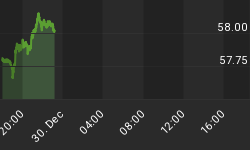In a recent article Eric Sprott and David Baker express the following opinions:
- they are not "seeing" a U.S. economic recovery;
- the U.S. housing new home sales and existing home sales lead them to a conclusion that "the U.S. housing situation is still a bust";
- U.S. unemployment numbers are not encouraging, and a view that U.S. jobs are recovering is not supported by U.S. tax receipts. Broadly stated, U.S. tax receipts are just keeping up with inflation;
- U.S. durables goods orders have recently declined;
- China's Purchasing Managers Index indicates that Chinese manufacturing has contracted for the last six months;
- the European economic situation continues to worsen; and,
- the emerging market BRICS are pushing for more say in International Monetary Fund matters.
Concurrently, Sprott and Baker say:
- "the physical gold market has been undergoing staggering change", with escalated demand side that the market seems to be missing "the importance of";
- they know of no sellers of physical gold "who can satiate that scale of new demand";
- that there is a disconnect between the paper gold price and the physical gold price; and,
- that disconnect eventually with be overpowered by sheer momentum.
Sprott and Baker have rather nicely summarized economic matters in a way that most thinking people who follow macro-economic reports and announcements closely likely agree with. Their comments on physical gold should be considered in the following contexts:
- the price of physical gold ought to trend positively in an environment experiencing:
- little, no, or negative real (inflation excluded) interest rates, and
- poor and volatile current economic conditions, particularly where near and longer term economic prospects are on the negative side of things, and even more particularly where real (inflation excluded) economic growth measured by GDP is low or even worse, negative; and,
- absent volatile paper gold trading markets, actual physical gold demand and supply ought to have a correlated effect on the price of physical gold.
Assuming no radical positive change in the European, and American macro-economic prospects, while traders taking profits and losses in 'paper gold' products may continue to create gold price volatility, over time if Sprott and Baker are right about physical gold demand overtaking physical gold supply, the physical gold price ought to trend upward from where it now is.
An important question is whether one is a trader of paper gold looking to make short term profits by timing the market, or a holder of physical gold as a safe haven - or is both a trader who looks to time the paper gold market volatility, and concurrently hedges his/her bets by owning physical gold.
Neither physical or paper gold 'are for' those who don't believe they understand gold and the gold markets, or for those don't have the stomach for gold price volatility in circumstances where the physical gold price does not appear to behave logically in the short term.
When Fundamentals No Longer Apply, Review the Fundamentals
Source: Sprott Asset Management LP, Eric Sprott and David Baker, April 2012
Reading time: 5 minutes
















